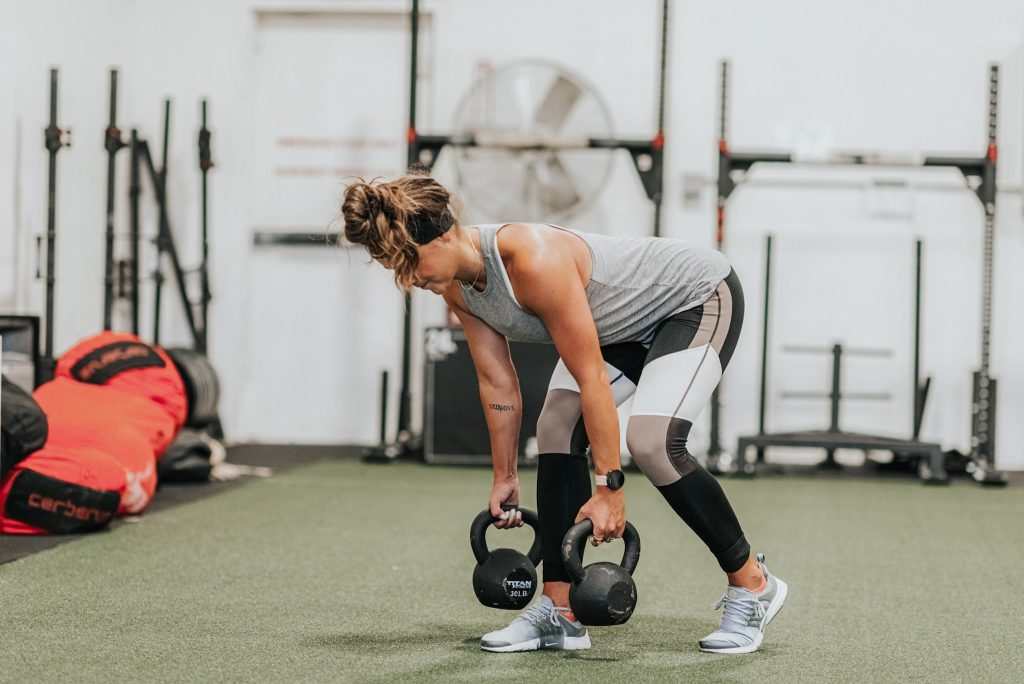the blog
welcome to
looking for something specific? find it here

Romanian deadlift (RDL), single leg bias edition.
The Romanian deadlift is a hinge movement, where the hips are the primary point of flexion and extension. It can be performed with many different variations. And with all of these variations, the following form largely remains the same:
- Knee(s) remains soft – not locked out, but not increasing or decreasing much in flexion from top to bottom of the movement
- Hips sit BACK
- Shin remains vertical, even negative at times
- Weight stays over the mid foot or slightly out in front (possibly placing even more demand on the hamstrings)
- Whole foot, per usual, stays planted firmly on the ground.
This movement is often used for the glutes but the hamstrings are the muscle primarily being stressed. More knee bend from this position (like a conventional deadlift) would recruit more glute fibers. If you DID want more glute recruitment, you would add a band around the front of the hips, anchored behind you. This way, the band is pulling you back, as you enter the concentric (shortening/hip extending) phase – demanding the glutes pull you into a standing position without getting pulled backwards into flexion.
The two variations we’re discussing today are single leg bias of the Romanian deadlift:
The B-stance RDL and the rear foot elevated RDL. Both are two of my favorite ways to get more unilateral hinging work in.
As far as loading either of these exercises, you can hold two dumbbells, load it contralaterally (opposite of working side) or ipsilaterally (same as working side). Up to you.
DB B-Stance RDL
I adore this variation of unilateral RDL because it allows us to heavily load and provide tension to the working leg without worrying about balance. In a true single leg RDL, we have balance as a possible limiting factor. That is not the case here.
You should have weight in both legs. The back leg is simply not working to help with the hip flexion and extension. The non-working leg should be behind you – how far behind depends on what’s most comfortable for you. Some people like the knees to almost be aligned (so not a wide front to back stance) while others prefer that non-working leg to be pulled further back. Getting solid tension in that working hamstring is the goal, period.
Rear Foot Elevated Single Leg RDL
This variation can feel strange at first. Take time to figure out your stance and how far out your front foot needs to be from the bench. You want to feel the tension in that working hamstring. So wherever that happens the most is where you want your foot to be. Because the foot is out front, the hamstring is never REALLY unloaded here. It remains under tension and things can get spicy very quickly. We love her for this.
The back foot can be plantar flexed like mine in the video below or dorsiflexed. Again, whatever you find most comfortable.
Either way
With either of these you are free to play with stance width front to back. I prefer my front foot pretty far out in front when doing rear foot elevated RDL because I feel my hamstring most here, and it forces constant tension.
Rear foot is the step between B stance and a true single leg RDL. The rear leg being elevated places even less weight in that leg – transferring more weight into the working leg.
If you’re looking for another single leg bias Romanian deadlift variation, take the rear leg for spin. Have you ever done rear leg elevated?
If you’d like to learn more about program design for strength, yes, and hypertrophy training over long term periodization, check out Pure PROgramming.
If you want to get strong, enjoy your workouts and make #educatedgains, then get on the Built by Annie waitlist.
Join my mailing list for weekly blog and podcast updates. You may or may not get VIP discounts as well. Just saying. Join the fam!
View original post on instagram:
I'm an adventurous introvert from Vancouver, Washington who lives on sleep + "me time." I'm a lover of lifting weights, dinosaurs, real talk and traveling with my husband. I am here to help you move better, lift more, bust the myths of the fitness industry, and inspire you to love the process.
Hey you,
The name's Annie & you're reading my thoughts. Let's get acquainted.
the whole story >
looking for something specific? find it here
THE LINKS BELOW ARE AFFILIATE LINKS
SKIN CARE
Nutrition
brands I love
working against gravity
Fre skin care
favorites
blue light blockers
klassy network
code: fdba saves you 15% off
online TRAINERS
save $50
code: ANNIE saves you 20% off
You love my style, trust my reviews, and want more Annie Miller Concepts vibes in your life? Shop my favorite brands. You get awesome products and yours truly gets a little kick-back.
